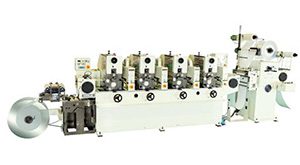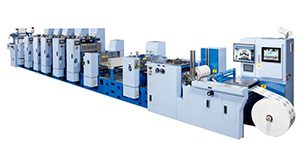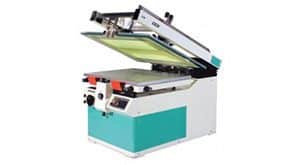Machine
Available Printing Methods for Every Need
Available Printing Methods Discover a variety of printing methods designed to fit different needs. From cost-effective solutions to high-quality finishes, each method is tailored to enhance your labels based on their intended use. Explore the options and find the best fit for your project.
Relief Printing (Cost-focused)
Relief printing involves a plate with raised and recessed areas where the ink is transferred from the raised areas directly to the paper. The recessed areas do not receive any ink. This method allows for mass production at a low cost. It is the most common method for label printing. The precision of plates has improved over time, and there are no issues with reproducing four-color prints. The quality is comparable to offset printing, making it the most popular printing method in recent years.

Related Articles
What is Relief Printing? Reasons Why We Recommend It
Offset Printing (Quality-focused)
Offset printing is a traditional method that uses the repelling properties of oil and water. The ink on the oil layer is transferred to the substrate via a blanket. The plate does not directly contact the substrate. The key feature of offset printing is its fine dot reproduction, ensuring high-quality prints. If you desire high-level results, we recommend offset printing.

Related Articles
What is Offset Printing? Differences from Other Printing Methods Explained
Silk Screen Printing (Durability-focused)
Silk screen printing utilizes a screen mesh through which ink is pressed. The ink is spread evenly using a squeegee, and after removing the screen, the ink remains only on the desired areas. The thick layer of ink makes this method suitable for durable and fade-resistant stickers, especially for outdoor use.

Related Articles
What is Silk Screen Printing? Explained with Printing Process
Inkjet Printing (Small lot & durability-focused)
Inkjet printing does not require plates. The ink is sprayed from nozzles onto the substrate. This method allows for low-cost, small-lot production. The pigment is also UV-resistant, making it suitable for outdoor use. Additionally, post-printing cutting with a plotter (automatic cutter) is possible, making it ideal for sign displays.

Related Articles
What is Inkjet Printing? Explained with Pros and Cons

Start Your Project Now – Contact Us or Get a Quote!




